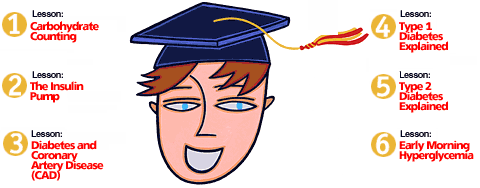



 |
|
|

|
|
Diabetes Lesson 3 - Diabetes and Coronary Artery Disease (CAD) 
Diabetes-related cardiovascular complications are directly related to either the blocking or slowing down of blood flow to the body. In the case of CAD, blood flow is either slowed or blocked to and from the chambers of the heart. Diabetes does this in a number of ways:
Thankfully, these harsh and potentially hazardous conditions can be greatly curbed by:
Treatment for CAD is similar for both diabetics and non-diabetics, and can be administered in a number of different ways. The first step is making lifestyle changes that can help curb or prevent unnecessary health risks; these include quitting smoking, exercising more, and balancing your diet. Another treatment involves angioplasty, a medical procedure done by inserting a balloon-tipped catheter tube into the artery to clean it out and reopen the blood flow to the heart. The third treatment option for CAD is bypass surgery. This involves surgery to redirect flow of the blood through more patent blood vessels. Page 1 2 3 4 Copyright © 2000-2025 savvyHEALTH.com. All rights reserved.
|
|
|
||||||||||||||||||
|
About savvyHEALTH | Privacy | Feedback | Home
http://www.savvyHEALTH.com/
All contents copyright © 1999-2025 savvyHEALTH, Inc. All rights reserved.
This internet site provides information of a general nature and is
designed for educational purposes only. If you have any concerns about
your own health, you should always consult
with a physician or other healthcare professional. Please review the Terms of Use before using this site. Your use of the site indicates your agreement to be bound by the Terms of Use.
|
|